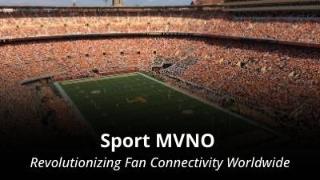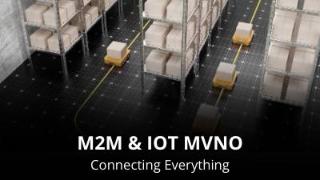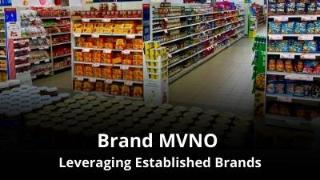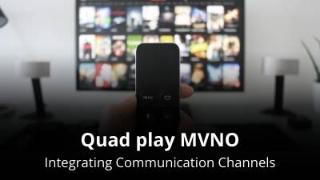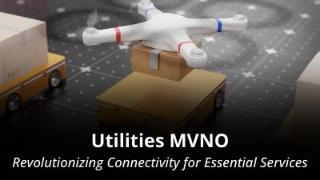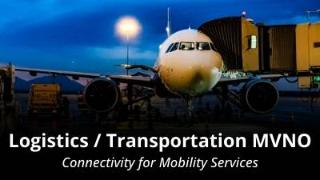Introduction about starting a Logistics / Transportation MVNO/IOT
Starting a Logistics / Transportation MVNOs/IOT where you provide specialized mobile services for businesses involved in logistics, transportation, and supply chain management. By offering connectivity solutions tailored to fleet management, real-time tracking, and communication, these MVNOs play a pivotal role in optimizing operations within the industry.What do you need to know about starting a Logistics / Transportation MVNO
- What are the advantages and disadvantages ?
- What are the Revenue sources and Pricing strategy?
- What are suitable segments?
- What kind of Mobile bundles are typically used?
- What kind of ARPU can you expect?
- What is the Go-to-Market Strategy?
- What are some points to think of for the Marketing Plan?
- What kind of financing is to be expected?
- What kind of MVNO type is typically used?
- What is the expected time for the launch?
- What is the expected impact of 5G?
- What is the expected impact of eSIM?
- IOT and its Relation to Transport MVNOs
- Benefits of Launching Transport MVNO/IOT
- Frequently Asked Questions
- Summary
What are the Advantages and Disadvantages of a Logistics / Transportation MVNOs
Advantages: The advantage of starting a Logistics / Transportation MVNO is that they provide reliable communication and data services essential for fleet management, real-time tracking, and route optimization. They enhance operational efficiency, reduce costs, and improve customer service.
Disadvantages: High initial setup costs and the need for robust infrastructure. Additionally, ensuring reliable coverage and data security is crucial due to the critical nature of logistics operations.
What are the Revenue Sources and Pricing Strategy
Revenue Sources: Subscription fees for fleet management solutions, data plans for tracking devices, and premium services for real-time analytics and route optimization.
Pricing Strategy: Competitive and flexible pricing models, including pay-as-you-go plans and tiered pricing based on the number of connected devices and data usage.
What are suitable segments for Logistics / Transportation MVNO/IOT?
- Logistics Companies: Enhancing fleet management and real-time tracking.
- Transportation Services: Providing connectivity for passenger and goods transport.
- Supply Chain Management: Offering data solutions for inventory tracking and route planning.
- Delivery Services: Facilitating real-time tracking and communication for delivery personnel.
- Freight Companies: Enhancing communication and tracking for long-haul freight operations.
- Ride-Sharing Services: Providing reliable connectivity for driver coordination and passenger tracking.
- Public Transit Authorities: Enabling efficient communication and data management for buses, trains, and other public transport.
- Emergency Services: Ensuring robust communication for emergency response vehicles and personnel.
- Warehouse Management: Offering connectivity solutions for inventory control and logistics within warehouses.
- Rental Car Services: Providing tracking and management solutions for rental car fleets.
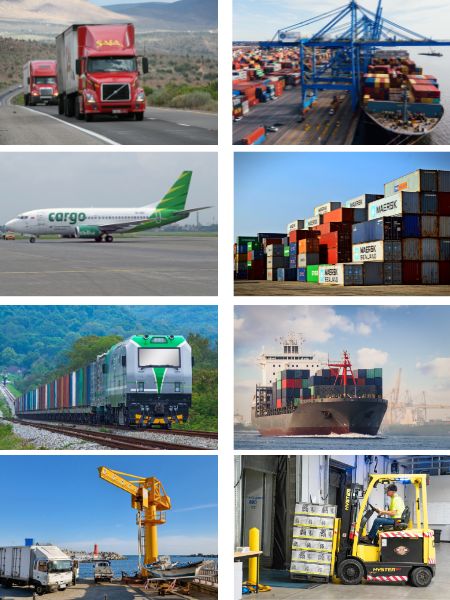
What Mobile bundles are typically used for Logistics / Transportation MVNOs
Data: High demand for real-time tracking, route optimization, and analytics.
Voice: Essential for communication between drivers, dispatchers, and support teams.
SMS: Used for alerts, notifications, and status updates.
What kind of ARPU can you expect for a Logistics / Transportation MVNO/IOT?
ARPU: Moderate to high.
Why: Logistics & Transportation MVNOs provide high-value services that are critical for operational efficiency, resulting in a willingness to invest in reliable connectivity solutions.
Where It Is Based On: The need for continuous data transmission and communication for fleet management and real-time tracking drives ARPU.
You need to work out the details in your Financial Plan.

What is the Go-to-Market Strategy for a Logistics / Transportation MVNO?

Building strong partnerships with logistics and transportation companies is crucial. Emphasize the operational efficiencies and cost savings from reliable connectivity and data solutions.
Target Audience: Logistics and transportation companies, supply chain managers, and fleet operators.
Pricing Strategy: Competitive and flexible pricing with tiered options based on device connectivity and data usage.
Distribution Channels: Direct partnerships, industry events, and trade shows.
Promotion: Industry-specific marketing, case studies, and pilot projects.
Customer Support: Dedicated support teams with expertise in logistics and transportation.
What are points for the Marketing Plan for a Logistics / Transportation MVNO?
Highlight real-time tracking and route optimization, target logistics and supply chain companies with efficiency improvements, and promote connectivity solutions tailored for various transportation and delivery services. You need to work out below points in your Marketing Plan.
USP:
Reliable and high-value connectivity solutions for logistics and transportation.
Content Creation:
Case studies, whitepapers, and industry reports showcasing benefits.
Promotions:
Pilot programs and introductory offers for new clients.
Partnerships:
Collaborations with technology providers and industry associations.
Feedback Loop:
Regular engagement with clients to refine services and address challenges.

What kind of financing is to be expected for Logistics / Transportation MVNOs?

Financing: Medium
Due to the need for robust infrastructure, technology development, and regulatory compliance.
You need to work the details in your Financial Plan.
What kind of MVNO type is typically used for Logistics / Transportation MVNOs?
MVNO Type: Thin or Light MVNO
Logistics & Transportation MVNOs typically use the thin MVNO model, which allows them to create custom communication solutions for fleet management and real-time tracking while minimizing operational costs. This approach supports efficient and scalable services tailored to the unique needs of the logistics and transportation industry.
See also: Different types of MVNOs

What is the expected time to launch for Logistics / Transportation MVNOs?
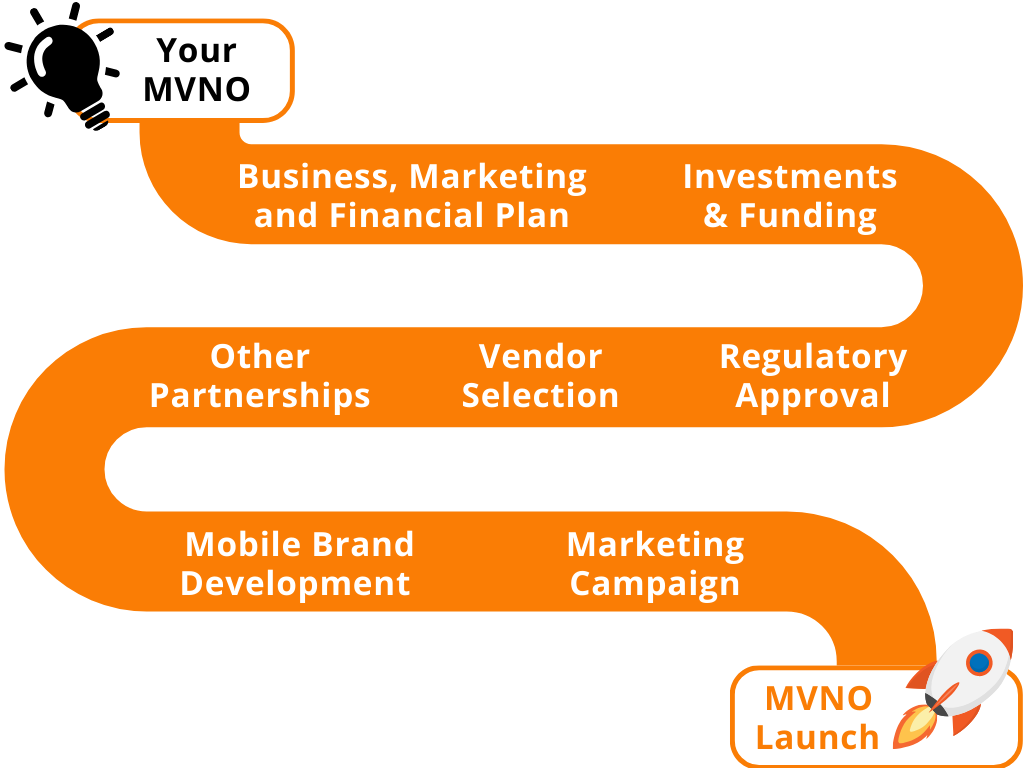
Expected Time to Launch: 3-12 months
Logistics/Transportation MVNOs, specializing in providing communication services tailored to the needs of logistics companies and transportation providers, can expedite the launch process by leveraging existing infrastructure. The primary focus is on formulating effective marketing strategies and acquiring customers within the logistics and transportation sectors.
To expedite the launch process, consider implementing a targeted strategy. For instance, concentrate on utilizing pre-existing solutions offered by Mobile Network Operators (MNOs), integrate their existing packages (bundles), and make use of their customer support infrastructure. Swift market entry is facilitated by streamlining services and tariff structures to meet the communication needs of logistics companies and transportation providers efficiently.
What is the expected impact of 5G for Logistics / Transportation MVNOs?
5G technology will significantly enhance capabilities by providing faster and more reliable data transmission, crucial for real-time tracking, route optimization, and fleet management. For more details see the Mobile Network section.

What is the expected impact of eSIM for Logistics / Transportation MVNOs?
IOT and its Relation to Transport MVNOs
Transport MVNOs, focused on providing connectivity and data services to the transportation sector, can leverage IoT to optimize operations, enhance safety, and improve the passenger experience. While the original text focused on entertainment and fan engagement, Transport MVNOs can utilize IoT for entirely different, transport-centric applications. Here’s how:
Fleet Management and Optimization: Instead of tracking fan activity, IoT devices like GPS trackers, telematics sensors, and engine diagnostics can be used for comprehensive fleet management. This includes real-time vehicle tracking, route optimization, fuel efficiency monitoring, driver behavior analysis, and predictive maintenance. Transport MVNOs provide the essential connectivity for these devices to transmit data, enabling businesses to reduce costs, improve efficiency, and enhance safety.
Connected Vehicles and Intelligent Transportation Systems (ITS): IoT facilitates communication between vehicles and infrastructure, enabling the development of ITS. This includes features like real-time traffic updates, congestion management, smart parking systems, and autonomous driving technologies. Transport MVNOs can play a crucial role in providing the reliable and low-latency connectivity required for these applications.
Passenger Information and Entertainment: While distinct from the original text’s focus on fan engagement, IoT can still enhance the passenger experience by providing real-time travel information, Wi-Fi connectivity, and on-board entertainment systems. This can include personalized travel updates, destination information, and access to streaming media.
Safety and Security: IoT can enhance safety and security in the transport sector. Connected cameras can provide real-time video surveillance of vehicles and transportation hubs. Sensors can monitor vehicle conditions and detect potential safety hazards. Emergency call systems can provide rapid access to assistance in case of an accident or emergency.
Public Transportation Optimization: IoT sensors deployed on buses, trains, and other public transport vehicles can provide real-time data on vehicle location, occupancy, and arrival times. This data can be used to optimize routes, improve scheduling, and provide passengers with accurate and up-to-date information.
Infrastructure Monitoring and Maintenance: IoT sensors can monitor the condition of transportation infrastructure, such as roads, bridges, and railways. This allows for proactive maintenance, preventing costly repairs and improving safety.
Cargo Tracking and Logistics: IoT-enabled tracking devices can be used to monitor the location and condition of cargo during transit. This improves supply chain visibility, reduces the risk of theft or damage, and enhances delivery efficiency.
By integrating IoT data and services into their offerings, Transport MVNOs become essential partners for businesses and public sector organizations in the transportation sector. They differentiate themselves by providing specialized connectivity solutions tailored to the unique needs of the industry.
Benefits of Launching Transport MVNO/IOT
Enhanced Safety and Security for Passengers and Cargo: Offer connected devices and services that enhance safety and security, such as real-time video surveillance, driver behavior monitoring, and cargo tracking. This, in turn, helps prevent accidents, reduce theft, and improve overall safety in the transportation sector, benefiting both passengers and businesses.
Improved Public Transportation Efficiency and Passenger Experience: Provide real-time data on vehicle location, occupancy, and arrival times for public transportation systems. Subsequently, this allows for optimized routes, improved scheduling, and better communication with passengers, ultimately leading to a more efficient and user-friendly public transportation experience.
New Revenue Streams through Value-Added Services: Offer value-added services such as in-vehicle Wi-Fi, on-board entertainment systems, and personalized travel information. This consequently creates new revenue streams for transport businesses and enhances the passenger experience, making their services more attractive and competitive.
Optimized Fleet Management and Logistics: Provide real-time vehicle tracking, route optimization, and fuel efficiency monitoring tools, enabling businesses to streamline their logistics operations. As a result, this leads to reduced fuel costs, improved delivery times, and increased overall efficiency in transportation and logistics.
Connected Infrastructure for Smart Cities: Contribute to the development of smart cities by providing connectivity for connected infrastructure, such as traffic lights, parking sensors, and environmental monitoring stations.
Autonomous Vehicle Connectivity: Provide reliable and secure connectivity for autonomous vehicles, enabling safe and efficient operation.
Frequently Asked Questions
How can a Logistics & Transportation MVNO effectively integrate with existing logistics infrastructure?
By partnering with technology providers and leveraging robust integration solutions to ensure seamless connectivity and data transmission.
What strategies can a Logistics & Transportation MVNO employ to attract logistics and transportation companies?
Focusing on cost savings, operational efficiencies, and enhanced service reliability through targeted marketing and demonstration projects.
What financial considerations are involved in launching a Logistics & Transportation MVNO?
Significant investment in technology, infrastructure, and regulatory compliance, with a focus on long-term partnerships and scalable solutions.
How can a Logistics & Transportation MVNO capitalize on emerging technologies like 5G and eSIM?
Leveraging the enhanced capabilities of 5G for real-time data transmission and utilizing eSIM for efficient device management and activation.
What strategies can Logistics & Transportation MVNOs employ to ensure long-term sustainability and profitability?
Continuous innovation, strong partnerships, and a focus on delivering high-value services tailored to the specific needs of logistics and transportation companies.
Summary
Logistics & Transportation MVNOs are crucial in optimizing operations within the logistics and transportation industry. By offering specialized connectivity solutions for fleet management, real-time tracking, and communication, they enhance operational efficiency and reduce costs. Successful launch and operation require significant investment, strategic partnerships, and leveraging emerging technologies like 5G and eSIM.


